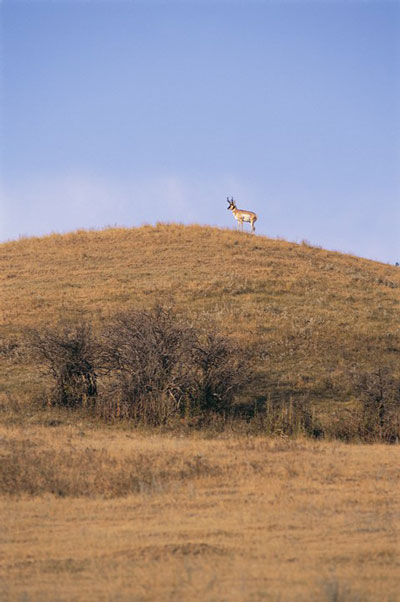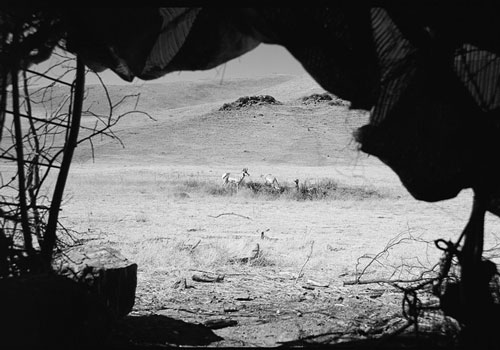 The antelope may be the prairie speedster, yet hunting it can require endless days in cramped pit blinds or broiling in the sun on windmill stands.
The antelope may be the prairie speedster, yet hunting it can require endless days in cramped pit blinds or broiling in the sun on windmill stands.
A decade ago, I crawled into a ground blind ready to start my hunt while the guide went for more natural concealment. Before he could return, I stood over a solid P&Y goat. The next fall, my hunt started in late morning and ended at mid afternoon. “Hunt smarter” out-bags “hunting harder” every time. Sage advice and flexible strategies make good things happen…pronto.
Record Book, Take Two
“We’ll begin with the decoys, then switch to a ground blind if antelope move into the area,” said Chad Schearer, owner of Central Montana Outfitters and my guide for the next two days. “I’ve seen five or six animals that will make Boone and Crockett this year,” he continued. “With luck we’ll get a crack at one of them.”
A family emergency put a crimp in my hunting schedule, and a three-day hunt with Schearer was cut in half. Having to make the most of every minute, we planned to use a wide variety of tactics. Like a bass fisherman with tackle boxes filled with lures, if a goat looked likely to “bite” on a particular “lure,” I was prepared to set the hook.
A 15-inch buck seemed to be guarding a harem of five does near the ranch headquarters, and Schearer and I hurried up a steep coulee shortly after my arrival. Schearer’s ranch, west of Great Falls, has lots of rolling and hilly terrain, ideal for decoying. My guide popped the decoy on the horizon and we got an immediate response. Peeking under the decoy’s body, I saw several does show interest in the small bogus buck and begin approaching.
I quickly put an arrow on the string and prepared to consummate a 10-minute goat hunt. The does came within 50 yards, began to snort, and then moved away. Schearer mocked them, returning the same sound with an antelope call. The buck never showed signs of irritation or aggression and followed the does over the ridge.
“I think he’s had his butt whipped a few times,” said Schearer as I placed the broadhead back into the bow quiver. “I’ve had the best success decoying when you have a dominant buck chasing lesser males. Like in the movies, when you see a good chase scene, things get exciting.”
 Our next encounter occurred 20 minutes later in a large alfalfa field. I sneaked along the crop line and set up the decoy, then moved into nearby willow trees for an ambush spot. Although hunters can usually get away with some movement behind a decoy, placing the deke in a position where an approaching buck would pass broadside seemed a good strategy.
Our next encounter occurred 20 minutes later in a large alfalfa field. I sneaked along the crop line and set up the decoy, then moved into nearby willow trees for an ambush spot. Although hunters can usually get away with some movement behind a decoy, placing the deke in a position where an approaching buck would pass broadside seemed a good strategy.
Unfortunately, another small herd of antelope appeared from the opposite direction, pulling my “dekes” with them. Like a hot doe, artificial animal strategies often get out-dueled by the real thing. We were 0 for 2 in the decoying department, yet we had an X-rated trick up our sleeves when another guide arrived with the doe antelope decoy.
Next: When Waterholes Work






